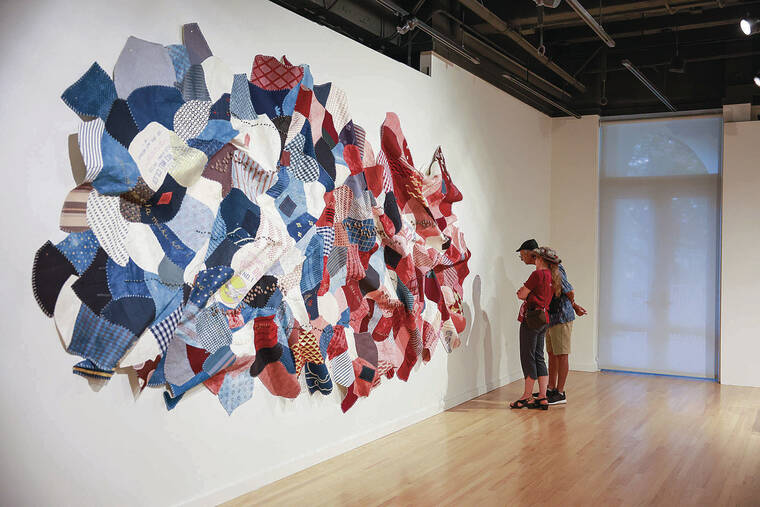The State Foundation on Culture and the Arts (SFCA) is confronting a financial crisis, facing a funding shortfall of approximately $1 million in state funds while receiving around $1 million from the National Endowment for the Arts (NEA). This situation arises after recent legislative changes altered how the agency can utilize its Works of Art Special Fund, significantly impacting its operations.
The SFCA’s primary funding source, the special fund, was established in 1989 and traditionally allocated 1% of construction and renovation costs for new state projects towards public art initiatives. This funding mechanism has expanded from the earlier 1967 Art in Public Places program, which focused solely on acquiring artwork.
According to Jeanne Kapela, the chair of the House Committee on Culture and Arts, the changes made by the legislature were necessary to protect state funding from potential cuts by the federal government. The adjustments were made in response to concerns regarding the stability of federal arts funding under the administration of former President Donald Trump.
Changes to the special fund were enacted when Governor Josh Green signed Act 131, which restricts the fund’s use solely to “costs related to the acquisition, planning, design and construction of works of art.” As a result, SFCA Executive Director Karen Ewald noted that the agency can no longer allocate funds for essential operations, including staff salaries and public programming.
Ewald expressed her frustration with the new restrictions, stating, “We want to ensure there is dedicated funding for the arts, and this just became less dedicated. It became kind of dismantled.” The SFCA has historically used the fund for a variety of purposes, including the transportation and conservation of artworks, operations at the Hawai‘i State Art Museum (the Capitol Modern), and the Artists in the Schools program, which employs artists to conduct teaching residencies in public and charter schools.
Legislative actions have not been without controversy. Ewald explained that the original budget proposal for the SFCA included staff and operational costs, but these were merged into HB 1378, which was primarily aimed at approving funding for a new performing arts grant. As a result, if the bill were to be vetoed, all state funding for SFCA’s paid positions would be eliminated.
Green initially opposed the bill, warning that it could jeopardize long-term arts funding by forcing it to compete with other critical state priorities like housing and healthcare. However, he later acknowledged that the final version of the bill had undergone significant amendments to ensure transparency and accountability in taxpayer money usage.
The new restrictions mean the SFCA can now only spend about $3.3 million from the special fund exclusively on acquiring or commissioning art, alongside receiving approximately $500,000 in general funds from the state budget. While the SFCA did receive federal funding of $1,014,738 in mid-June, the delay of nearly four months raised concerns about the stability of future funding.
Ewald indicated that while the federal funds provide a measure of relief, the overall financial landscape is “not business as usual anymore.” She expressed hope that the agency could still serve the community despite the reduced funding and reiterated the necessity for general funds to compensate for the limitations imposed on the special fund.
From the legislature’s perspective, Kapela framed the changes as a means to ensure compliance with federal regulations and to safeguard state funding against potential risks. She emphasized that the adjustments were not a reflection of any mismanagement by the SFCA but rather an effort to align state law with federal restrictions.
Ewald countered this perspective, asserting that the SFCA has historically utilized the funds appropriately and that administrative solutions could have addressed any compliance concerns without the need for legislative amendments.
The uncertainty surrounding both state and federal funding continues to pose challenges for the SFCA. Ewald highlighted that the changes could jeopardize the organization’s long-term funding for arts and culture, which has been a vital component of community engagement and education.
Despite the challenges, Kapela expressed optimism about the future of arts funding, suggesting that there may be opportunities for additional legislative support in upcoming sessions. She remarked that while the current situation is difficult, the foundation remains committed to finding stable funding solutions for the arts.
Ewald concluded, “We’re surviving and we’re going to get our federal funding. We’ll work on putting whatever money we do have out into the community.” As the SFCA navigates this turbulent financial landscape, its ability to adapt will be crucial in maintaining its vital role in Hawaii’s cultural landscape.



























